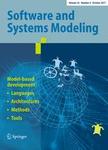版权所有:内蒙古大学图书馆 技术提供:维普资讯• 智图
内蒙古自治区呼和浩特市赛罕区大学西街235号 邮编: 010021

作者机构:Ecole Technol Super Dept Software & IT Engn Montreal PQ Canada
出 版 物:《SOFTWARE AND SYSTEMS MODELING》 (Softw. Syst. Model.)
年 卷 期:2025年
页 面:1-38页
核心收录:
学科分类:08[工学] 0835[工学-软件工程] 0812[工学-计算机科学与技术(可授工学、理学学位)]
主 题:Model-driven engineering Requirements specification Requirements verification Controlled natural language Requirement templates Domain models Safety critical systems
摘 要:Requirements specification and verification are crucial processes of software development. These processes are particularly costly for safety critical systems due to the high number of requirements and their complexity. For such systems, it is important to use natural language for the specification, as requirements need to be readable by non-technical stakeholders and certification agents. To mitigate the inherent ambiguity caused by the use of natural language, controlled natural languages (CNL) are introduced as a means to constrain the specification while maintaining readability. In this paper, we leverage model-driven engineering (MDE) to propose RESPECT, REquirements SPECification using Templates, a CNL-based approach for requirements specification and verification. The fundamental idea of RESPECT is to use MDE techniques to: 1) model requirements templates and thus ease their creation, implementation and evolution and 2) link the template models to existing domain models to support, to some extent, requirements verification and auto-filling. We provide a systematic process for the creation of customizable and reusable templates, which, to the best of our knowledge, represents a novel contribution. The application of this systematic process to a subset of the ARINC-653 standard from the avionics domain, resulted in seven templates that cover various types of requirements. We developed a tool, called MD-RSuT, that supports the specification of requirements using the seven templates created for ARINC-653, and the automated verification and auto-filling of requirements using an ARINC domain model. We evaluated the applicability of the approach across domains, and its effectiveness in improving requirements quality in terms of necessity, unambiguity, completeness, singularity, and verifiability. To do so, we applied the approach on three case studies coming from different domains, namely avionics, automotive, and general purpose software. This evaluation encompass